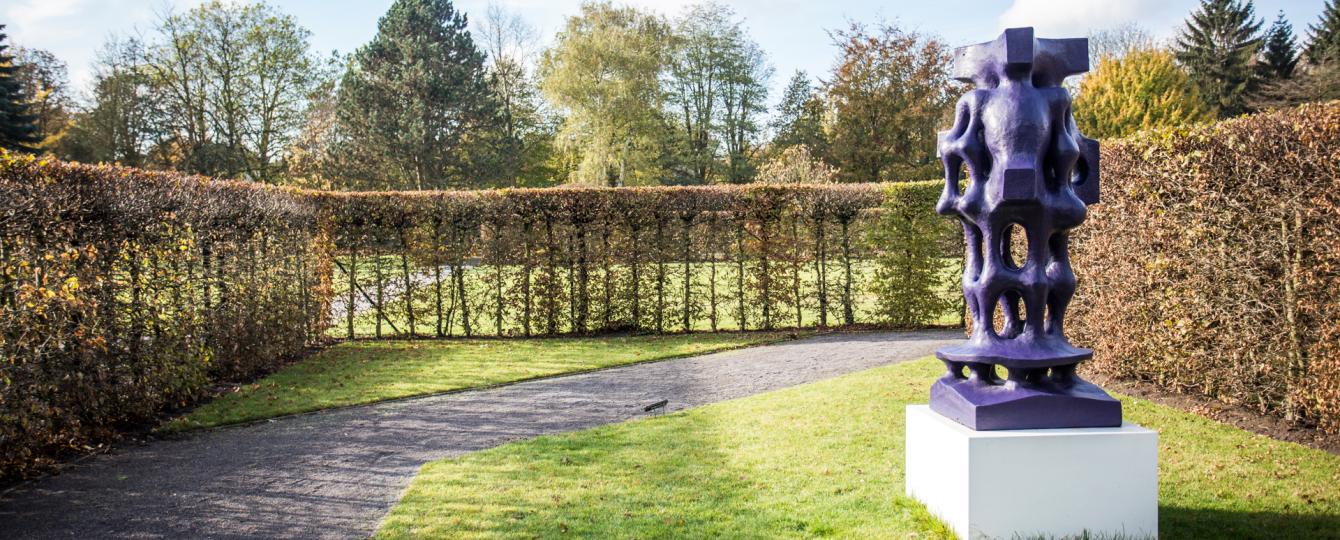The Middelheim Museum presents a highly diverse range of collection pieces and exhibition projects, combining both in a well-considered, selective acquisition policy linked to continuous reflection. The museum, which combines an ambitious museum programme with an attractive urban park setting, positions itself on the local, national and international level, in terms both of its collection and the latter’s accessibility. The museum’s vision is founded on three principles:
The Middelheim Museum contemplates (assumptions of the museum)
- In the Middelheim Museum, the past forms a constant source of insight for the present: the collection of modern sculptures offers inspiration, lessons and serves as a springboard for the contemporary art in the museum. Vice versa, new materials and techniques lead to new insights into possibilities for conservation and preservation.
- The Middelheim Museum is conducting ongoing research into the many facets of sculpture and their inter-relationship. Spatially oriented art is a vast field: from monolithic sculptures to installations, land art to performance art, sculpture to architecture, the indestructible to the ephemeral.
- The park serves as a laboratory for the public space. The open-air setting is the perfect framework for experimenting with content and form for the urban environment. The museum context, meanwhile, serves as the framework for the experiment, which is often lacking in public space.
- The Middelheim Museum is surrounded by a solid and stable network of intermediary and supporting organisations, by people with expertise and passionate employees and volunteers. The museum receives impulses from this network, as well as passing them on and striving to develop new relationships.
The Middelheim Museum provides (needs to which the museum provides a response)
- The Middelheim Museum has identified a great need for expertise and knowledge sharing about outdoor art: an increasing number of private and public initiatives and public authorities commission artwork for the public space, often without any experience or theoretical context. The Middelheim Museum develops this expertise in a very targeted manner and actively shares it.
- In addition to creating works for the outdoors, the conservation and management of this heritage requires a highly specific approach The effects of climate change constantly present us with new challenges, which means that constant adjustment, training and research are absolutely vital.
- The Middelheim Museum cultivates the listed landscapes (formal gardens, forest, orchards) and constantly strives to achieve a balance between the museum’s activities and a respectful relationship with its valuable green environment.
- By focussing on creating new works for exhibitions, by actively overseeing and supporting this process and aligning its exhibition programme with its acquisition policy, the museum creates new opportunities together with the artists in his or her work.
- Conserving an outdoor heritage collection – in the park and in the public space – requires a highly specific approach, in which continuous research and the adjustment of restoration and conservation techniques play a major role. Furthermore, this demands a well-thought-out storage policy and an innovative combination of an outdoor and indoor storage area. In the Middelheim Museum – which literally is a green museum and therefore considers sustainability one of its top priorities – an effective storage policy and collection play a vital role in this respect.
The Middelheim Museum works (the assets the museum uses to draw more attention to heritage)
- The annual exhibition programme consists of at least three exhibitions and two collection presentations.
- The Middelheim Museum adopts a selective acquisition policy, in accordance with its permanent research into the contemporary relevance of sculpture within the art scene as a whole.
- The exhibition programme is largely founded on the principle of creation and presentation, whereby artists create new works specifically for the open-air museum, which are subsequently displayed for the first time. This involves collaborations with some of the very best international artists.
- The exhibition programme in the park is expanded with a well-defined number of projects for emerging artists.
- The publication policy is linked to the temporary exhibitions. However, the museum can expand this and use publications to improve access to the collection and share information in the framework of conservation and management, and outreach activities. The Lode Craeybeckx documentation centre also plays a major role in this respect.
- The outreach activities play a key role in improving access to the museum’s four basic functions. “Customisation” is a central aspect of this approach Part of these activities, just like the other museum activities, are free and highly accessible.
- The Middelheim Museum is able to rely on a specialised communication and press service, which develops a well-founded communication strategy for the museum’s basic functions, with an effective balance between project-based and ongoing operations, and which uses new digital possibilities.
- The Middelheim Museum wants to reach and be accessible to as many people as possible, and seeks to establish relations with partners in the area surrounding the park, including the University of Antwerp and ZNA Middelheim.
- The Middelheim Museum promotes the preservation and management of sculpture in the city and its districts.



